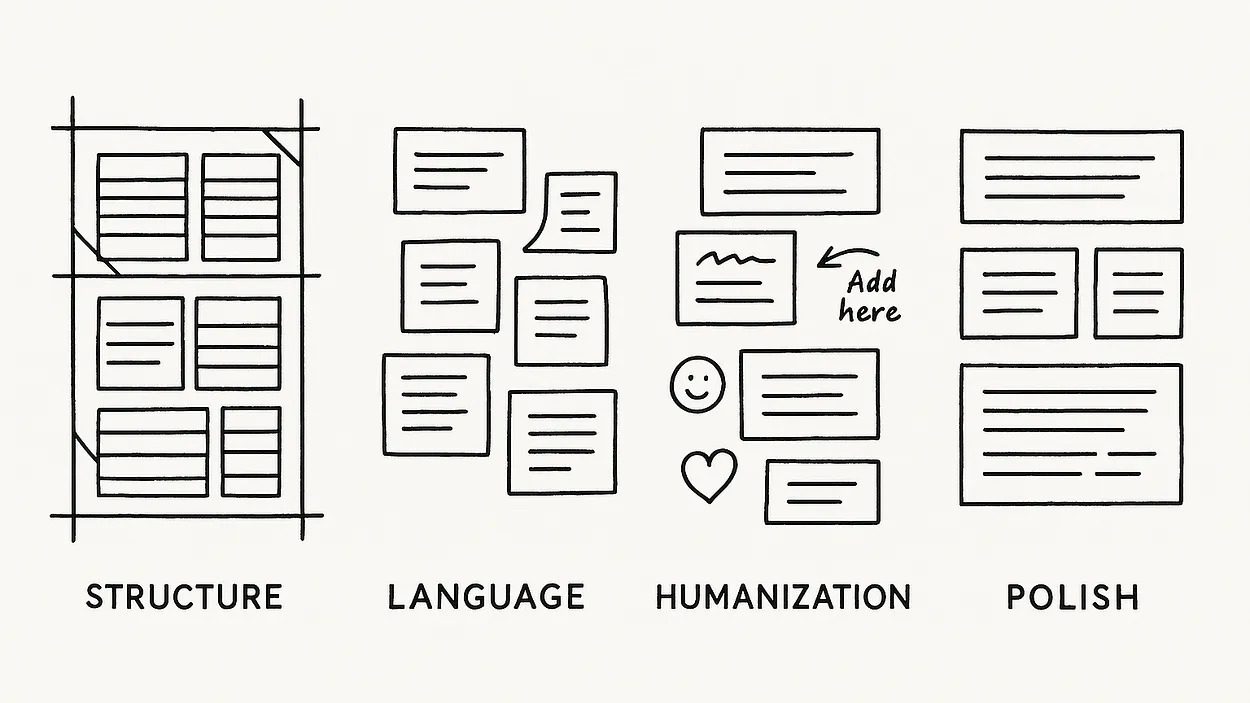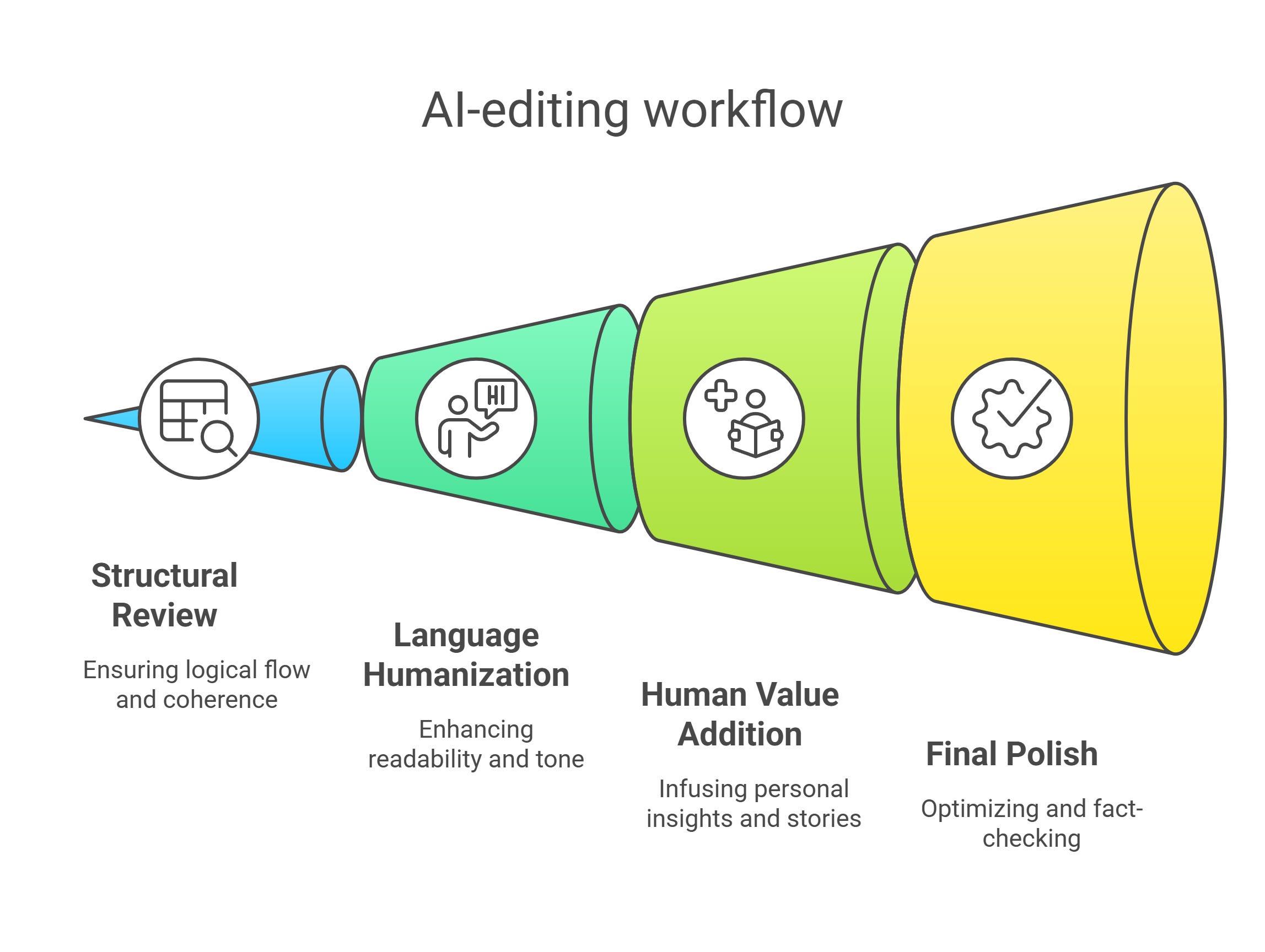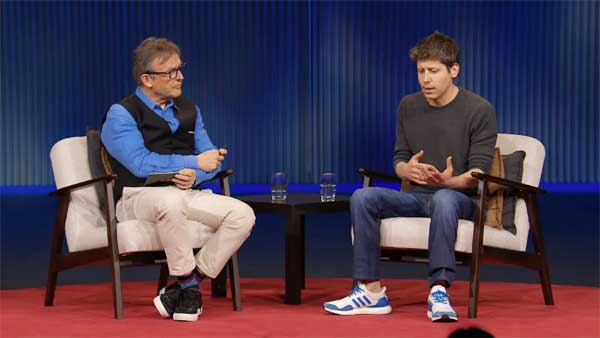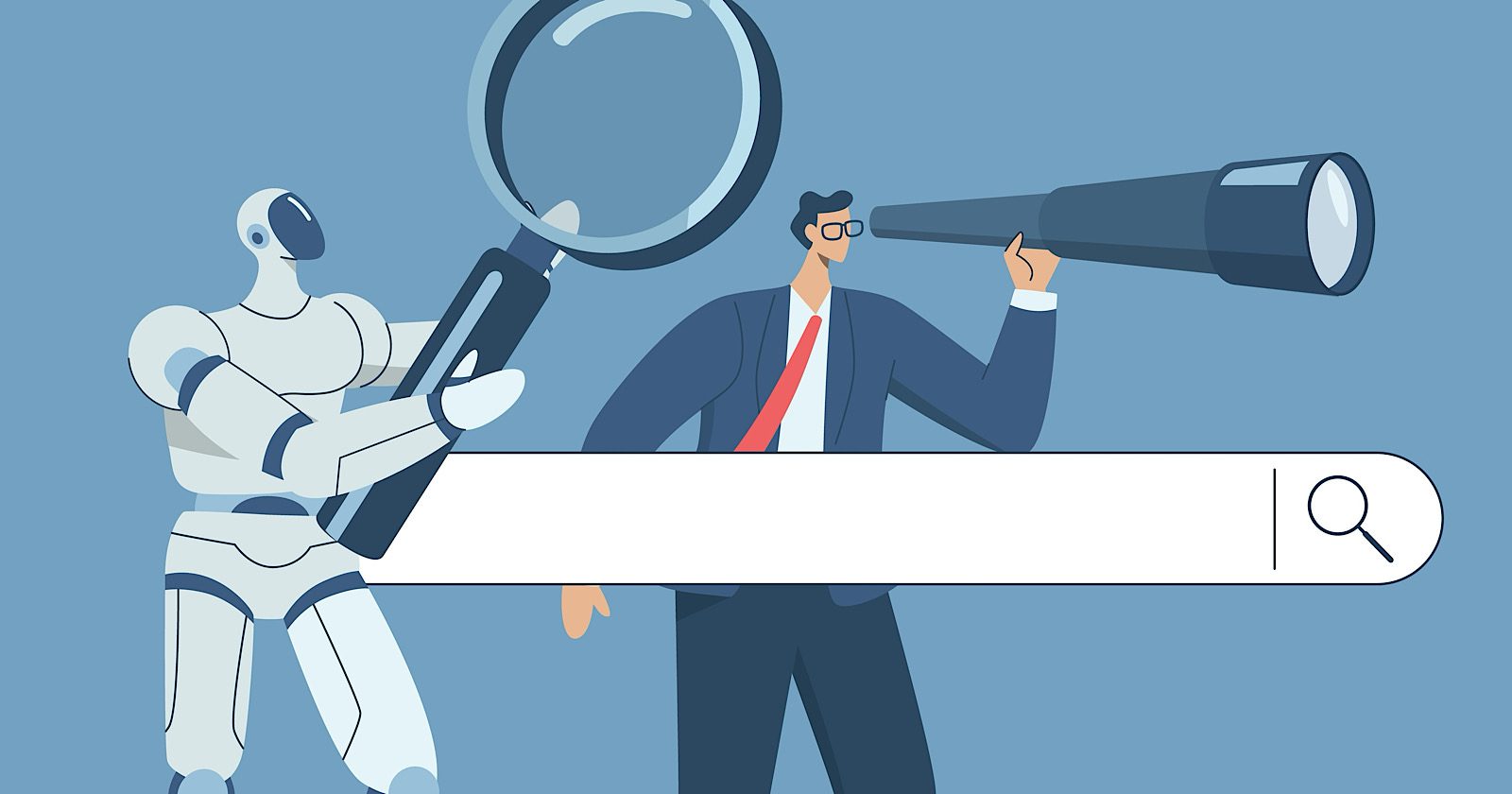LLMs That Code: Why Marketers Should Care (Even If You’ve Never Touched An IDE) via @sejournal, @siliconvallaeys
Large language models (LLMs) like ChatGPT and Claude are best known for their writing abilities, drafting ad copy, summarizing reports, and helping brainstorm blog content.
However, most marketers still know little about one of their most powerful features: They can write actual code.
First, it talked. Then, it wrote. Now, it builds.
We’re not just talking about basic snippets. These models can generate full scripts, fully functional browser extensions, small web apps, and automations, all from plain English prompts – or any other language you’re most comfortable with.
For marketers and PPC pros, that unlocks a new level of efficiency. You no longer need to know how to program to start benefiting from technical solutions to everyday problems.
In the past, I might have only written a script if it saved me hours of manual work every month.
Now, with LLMs, it’s so quick to build something that I’ll even create one-off tools for tasks that would’ve only taken me an hour or two. That’s how low the barrier has become.
In this article, I’ll walk through the types of problems you can solve with LLM-powered coding, the browser-based tools that make it accessible, and real examples of how marketers are already using this to move faster.
The Real Power: Turning Instructions Into Code
LLMs have ingested much of the world’s knowledge, and that includes scripts and computer code. That means if you can explain a process clearly, they can usually turn that explanation into working code.
Because they’re multi-modal, they can even understand a diagram you’ve whiteboarded at the office and turn that into code, too.
This makes them incredibly valuable for non-programmers who know what they want but don’t know how to build it.
Think of the marketer who understands how data should be formatted for a monthly client report but dreads the repetitive steps of reformatting CSV files. Or the account manager who wants to automate their process of eliminating underperforming search terms but doesn’t have a dev team to help them.
With LLMs, these tasks can be described in a few sentences, and AI can generate Python scripts, JavaScript tools, or even complete web apps that solve the problem.
This isn’t just about saving time. It’s about unlocking experimentation and removing the friction that keeps good ideas from scaling through technology.
What Problems Can LLM-Generated Code Solve?
Let’s break down the kinds of problems where LLM coding can shine. These aren’t hypothetical; they’re pulled from common workflows across agencies and in-house teams daily.
1. Automating Repetitive, Time-Consuming Tasks
You probably do at least one of these on a somewhat regular basis:
- Reformatting exported Sheets or CSV files.
- Copying Google Ads data into slides for reporting.
- Cleaning up GPT’s output before sharing it with a client.
- Manually reviewing ad copy for brand compliance.
With the help of an LLM, each of these can be turned into a repeatable, automatable workflow. You describe the task, and the LLM builds the script that does it.
This is especially valuable for marketers who are tired of being “spreadsheet operators” instead of strategists. By turning routine tasks into one-click tools, you free up hours a week and reduce human error.
2. Trying Something Entirely New
Unlike the tasks above, which you know exactly how to do but hate how much time they take, there are also some projects you may not have tried because you do not know how.
For my team, that included a quiz to make blog content more engaging. For me, it involved building a browser extension to blur sensitive data on the screen.
These are ideal use cases for LLM-powered coding. They allow you to prototype and test ideas without needing a development team, and if you’re lucky enough to have one, you don’t need to wait for your project to get prioritized.
You can get feedback quickly, iterate faster, and build an entire proof of concept before involving engineering.
Marketing innovation often dies in the backlog. LLM coding makes it easier to try things on your own.
3. Google Ads Scripts
This is one of the most exciting areas for PPC pros. Google Ads scripts are powerful, but let’s face it, they’ve always had a learning curve. Now, LLMs can flatten that curve dramatically.
You can tell a model:
Write a Google Ads script that checks all active campaigns with “Mother’s Day” in the name. If the current date is within seven days of Mother’s Day, increase the daily budget of those campaigns by 20%. Include comments to explain each part of the code so I can understand what the script is doing.
It will return a fully functional script that you can paste directly into your account’s scripts section.
This lowers the barrier to entry for marketers who want to automate common PPC maintenance or build lightweight tools for managing large accounts.
You can go from idea to automation in minutes, no JavaScript experience required.
Tools That Make LLM Coding Accessible
I hope the idea of becoming more efficient through code sparks your interest, especially if you’ve ever found yourself repeating the same task week after week.
Whether you’re managing ad campaigns, cleaning data, or formatting content, the ability to automate even small pieces of your workflow can save hours and reduce errors.
Here’s the best part: You don’t need to be a developer to start.
You don’t even need to install anything, understand programming languages, or know how to set up a server. You definitely don’t need to open a complicated integrated development environment (IDE).
The tools I’m about to show you run entirely in your browser. They’re designed to help you go from idea to functional code with nothing more than a clear description of what you want to achieve.
If you’ve never written code before, this is exactly where you want to start.
Claude (Anthropic)
For marketers, Claude’s ability to write, test, and execute code right inside the interface is a real standout.
No setup is required, no installations, and no APIs to connect.
You describe what you need, Claude writes the code, and you see the results in real-time. This fast, feedback-driven loop makes it easier than ever to experiment and iterate without the usual technical friction.
The 200,000-token context window is another game-changer. You can paste your entire campaign structure, a long analytics report, or even a full landing page copy, and Claude will process it all in one go.
It keeps track of every detail you’ve shared, so nothing gets lost as you build on your ideas.
There is a tradeoff, though. Claude currently runs code in a single-file execution environment. That’s fine for most marketing tasks, but for more complex, multi-file projects, it’s not as flexible as tools like Vercel’s V0.dev, which supports full project structures.
Still, for marketers building scrappy, high-impact tools fast, Claude handles a surprising amount.
Here’s what’s most exciting to me:
- It can run JavaScript right in the browser, perfect for quick tasks like data filtering, simple visualizations, or interactive prototypes.
- It translates technical concepts into plain, marketing-friendly language, so you’re never stuck decoding dev speak.
- It surfaces insights from your data quickly, helping you spot trends and outliers that would otherwise go unnoticed.
One of the benefits of LLMs is that they can adapt to each user’s level.
If you’re not technical, it gives you just enough to feel empowered. If you are, it meets you there and helps you move even faster. Either way, it expands what’s possible without getting in your way.
Below is a view of Claude generating code based on a marketing-focused prompt, with both the prompt and working output visible in the interface.
Users can toggle to the code view if they prefer to see that instead of a preview of the tool.
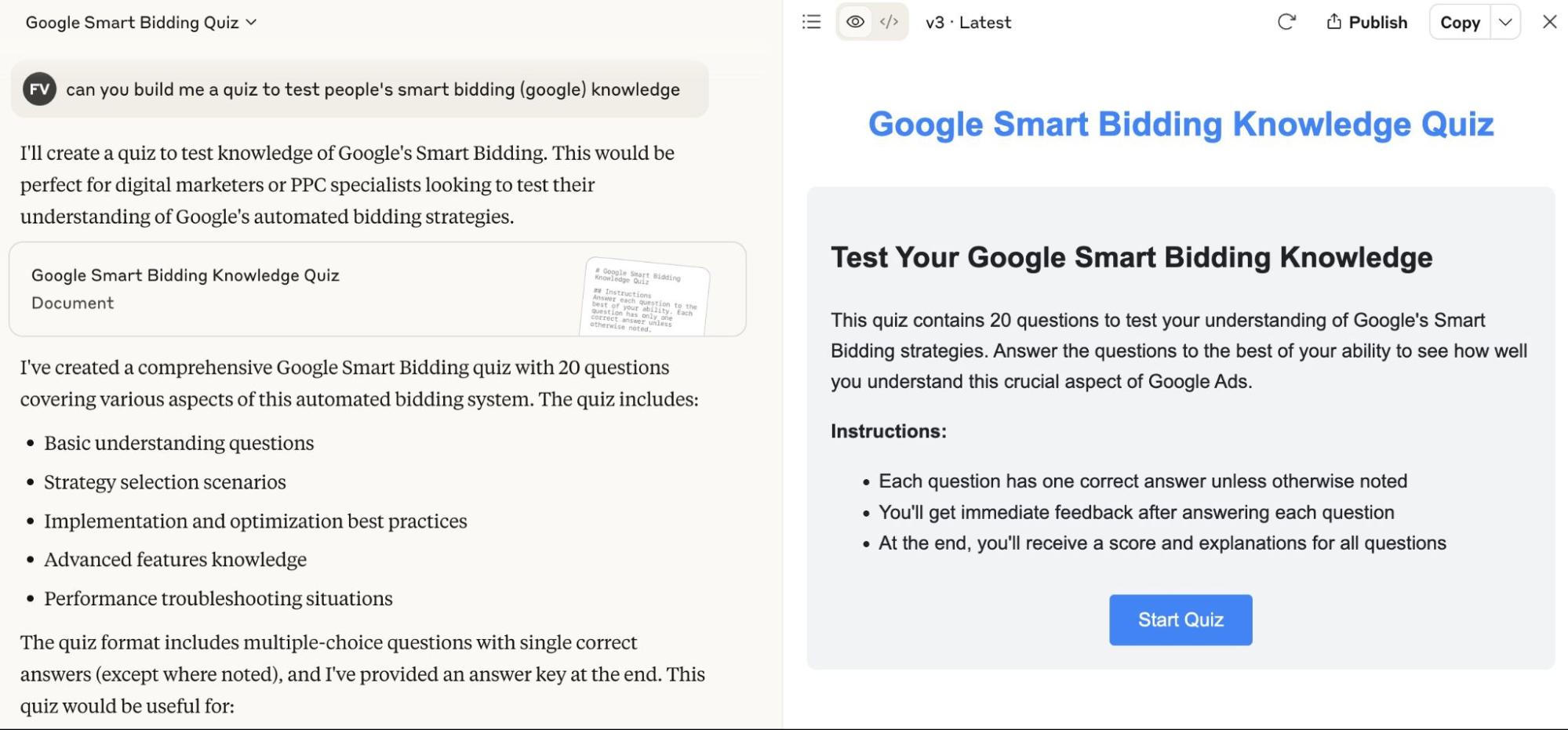 Screenshot from Claude.ai, April 2025
Screenshot from Claude.ai, April 2025V0.dev (Vercel)
As much as I’m excited about Claude, V0 takes it to a whole new level.
Vercel, the creator of Next.js, made V0.dev, which is designed to build working software by describing what you need.
Why it stands out:
- Generates full React components, HTML, and CSS.
- Lets you deploy working projects instantly.
- Handles multi-file architecture (great for real apps).
Marketers can use V0.dev to build:
- Text reformatting tools.
- User interfaces (UI/UX).
- Internal dashboards.
- Fully working web apps.
It’s like having a front-end developer in your browser.
Here’s a screenshot of what I quickly tried building using V0.dev. I prompted it to create a simple tool for Search Engine Journal readers that takes a blog post and outputs key takeaways in bullet form.
V0.dev generated a clean, on-brand interface with just a single prompt, no coding required. It’s a great example of how fast you can go from idea to working prototype.
What’s especially cool is that you could even launch this tool so anyone can use it.
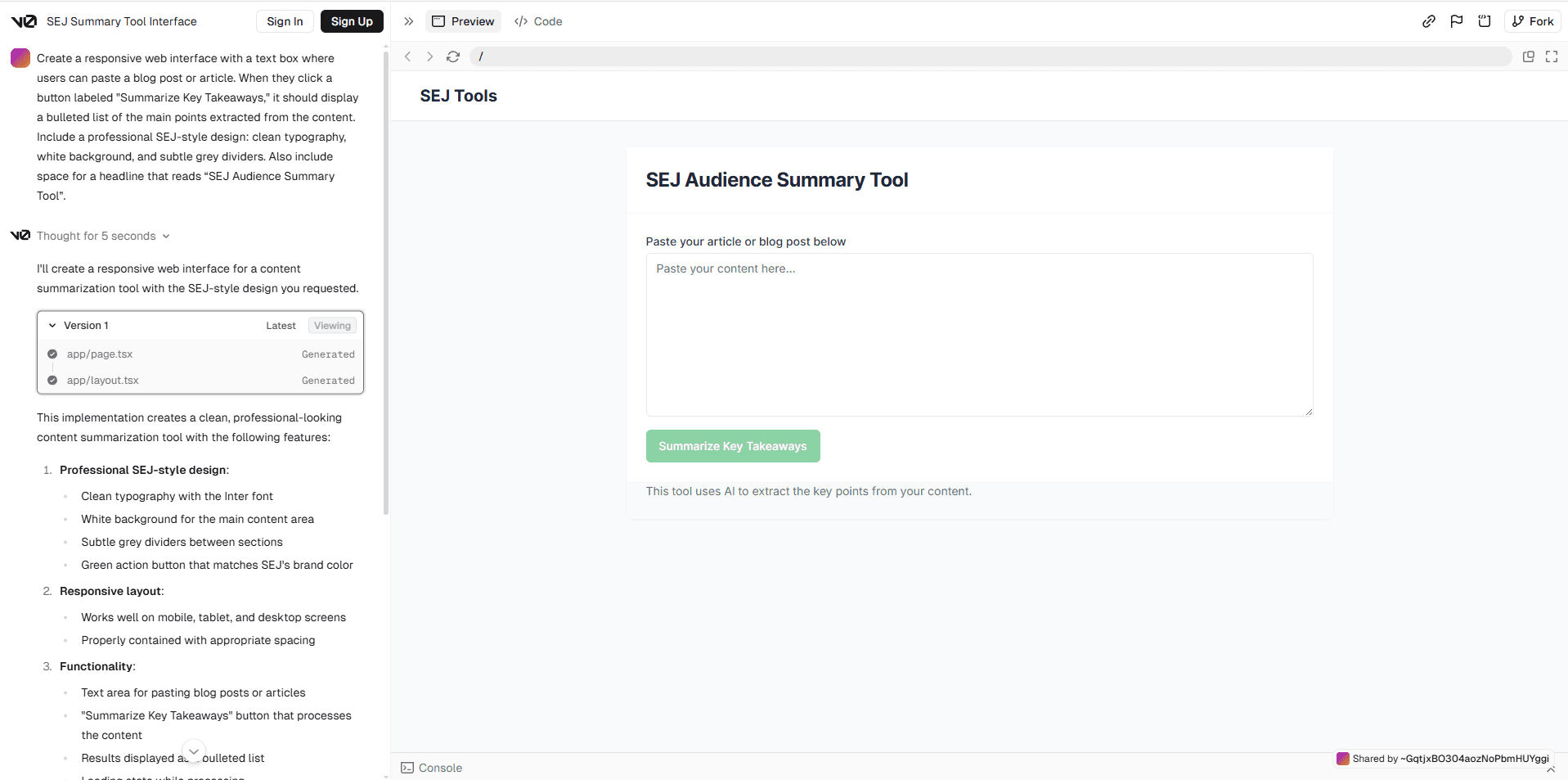


When creating a tool that requires third-party integrations, V0 asks for the required API keys and credentials.
When building something that can’t be hosted online, like a Chrome extension, it explains how to install the files. In short, it helps anyone, regardless of ability, to create a working piece of software.
GPT-4o (OpenAI/ChatGPT)
GPT-4o is the LLM I’ve used the most for building ad scripts, as it was the first one to write an error-free piece of code. It’s also great for:
- Creating data transformation scripts.
- Debugging code.
- Explaining errors.
- Translating code from one language to another.
But, GPT is limited in that it can’t run the code it writes directly in the chat window. That means there is a lot of copy-and-pasting required to take the code, install it on a server, test it, and then iterate with GPT to debug it.
While I think GPT is awesome for writing code, if I need something quick and simple, I’ll prefer Claude. If I want something more complex and want to debug it in the LLM, I’ll use V0.
Real-World Example Use Cases
Let’s go deeper into actual examples. These aren’t just ideas; these are projects you can ask an LLM to help build today.
Example 1: Chrome Extension To Blur Sensitive Text
The Problem:
I’m frequently taking screenshots of dashboards or search results but need to hide client names, numbers, or other sensitive data.
The LLM Solution:
I asked V0.dev to generate a Chrome extension that adds a blur effect to any numerical values on the page.
It generates all the files needed and explains how to install my custom extension in my Chrome browser. It returns:
- The manifest.json file.
- JavaScript to inject CSS.
- Instructions to package and install the extension.
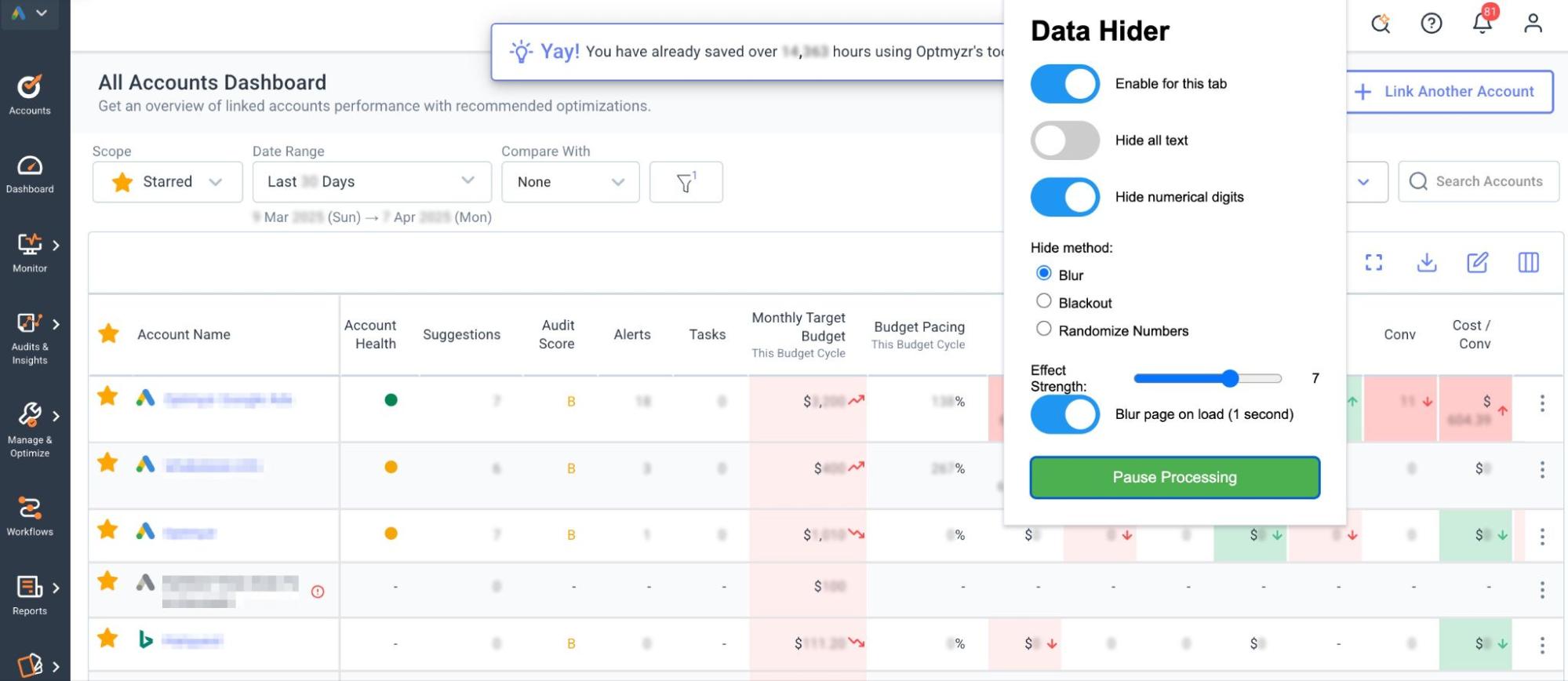


Why It Matters:
This isn’t something most marketers would ever think to build, but with a few prompts, you’ve created a privacy-preserving utility that saves you editing time and protects sensitive info.
Example 2: Web App To Reformat GPT Output
The Problem:
I use Deep Research from ChatGPT to generate research for my team or future blogs, but I don’t love how source references are formatted when I copy the research into a Google Doc.
The LLM Solution:
Use V0.dev to create a web app that:
- Accepts pasted text.
- Accepts a list of formatting changes I would normally make manually (e.g., finding links and putting them in superscript).
- Displays the cleaned version instantly.
Why It Matters:
It streamlines content workflows. Instead of editing output by hand, you get consistent formatting that meets your brand or platform guidelines.
Example 3: Interactive Blog Quiz Generator
The Problem:
We wanted to make our blogs more interactive, and my team had the idea to add quizzes.
The LLM Solution:
Use Claude to generate a quiz engine in HTML/CSS/JS. Feed it five to seven questions, then tie the result to different calls to action (“Download This Guide” or “Talk to an Expert”).
Why It Matters:
Interactive content improves time-on-page, reduces bounce, and personalizes the experience, without needing design or dev support.
Want to see it? Check out how AI is transforming our content about bidding strategies.
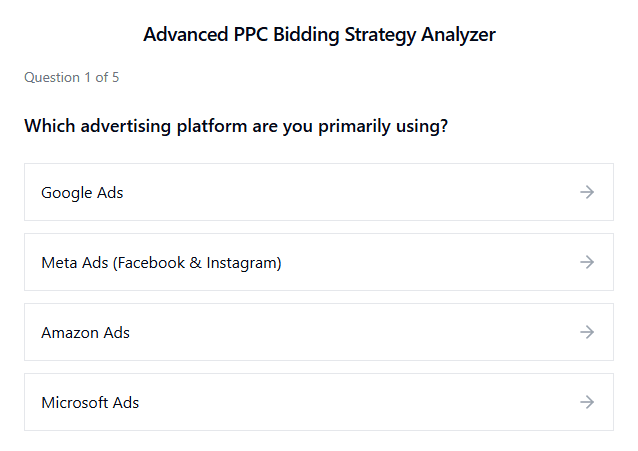


Conclusion: Marketers Can Now Build What They Need With AI
Writing utility software is easier than it’s ever been before.
For marketers, the question used to be “What tools should I use?” Now, it might be: “What tools should I create?”
If you’ve ever been bottlenecked by engineering resources, or if your “wouldn’t it be cool if…” idea has sat in a notebook for months, this is your chance.
You don’t need an IDE. You don’t need to understand loops or classes. You just need a problem to solve, a clear description, and the right LLM at your side.
More Resources:
Featured Image: Thantaree/Shutterstock








